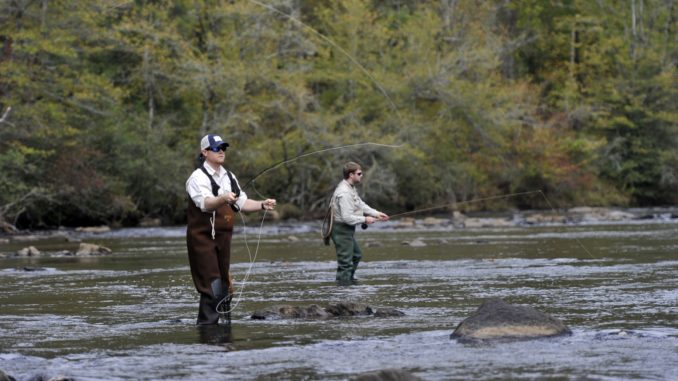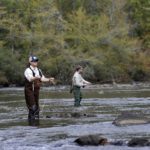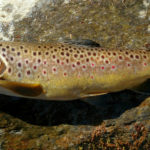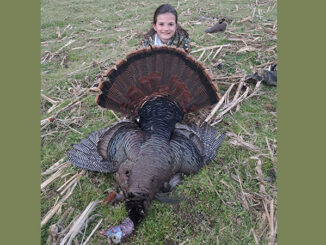
April, May offer just about the best trout fishing you can imagine, and you don’t have to be an expert
Beginning around the middle of March and continuing through May, mountain streams start warming up, browns, rainbows and brook trout become active and hungry, and mountain anglers enjoy some of the best trout fishing of the year.
In the spring, when insect hatches occur frequently and in great variety, trout become veritable eating machines. Also in the spring, mountain streams are fuller because of frequent showers, which means more oxygen is in the water, another factor that makes fish more active. What all this means is that even a trout fisher with marginal skills has a greater chance of catching fish in early and late spring.
Most insects come off the water in the early morning. They migrate upstream, mate in the trees, and the females return to the water in the evening to lay eggs. By knowing these cycles, a trout fisher can greatly increase his or her success.
During April and May, at least 20 different hatches occur, and for each hatch, there are at least two types of dry flies, nymphs and emergers. You don’t have to become an expert in entomology, though, to have good success with fly fishing. Two nymphs and one dry fly–will serve you well.
In nymph patterns, use a Gold Ribbed Hare’s Ear or Pheasant Tail. A bead-head will add extra weight to get the fly down to the bottom where nymphs usually are found.
The best rule is to use larger patterns, such as Nos. 12s and 14s, in early spring and switch to smaller patterns as the weather gets warmer. You’ll catch a lot more fish that way.
Dry flies don’t have the versatility of nymphs, but if you want to go with one fly, choose a rusty spinner pattern — one with wings straight out at the sides. When a mayfly dies and falls to the water, it floats with its wings spread flat on the surface, and it doesn’t move. Color is important, because the majority of mayflies have a rusty color when they die.
Fly fishing, of course, is not the only method of catching trout. While a few streams are limited to fly fishing, the majority of mountain streams in western North Carolina and South Carolina’s Upstate may be fished with flies or artificial lures. Live bait is limited to streams that are stocked with hatchery-raised trout and posted as hatchery supported waters. Live bait also may be used in streams designated as wild trout/natural bait waters.
Regulations for wild trout waters in the national forests and Great Smoky Mountains National Park stipulate that artificial lures, such as spinners, must have a single hook. A legal spinner can be made from a treble-hook spinner by clipping off the extra hooks. However, the spinners do not spin as well as those that are manufactured with single hooks.
Bright colors are best for spring fishing, especially yellow and chartreuse. Lure size depends on the type of water you’re fishing. Early in the spring, when streams are full, a 1/8-ounce lure is very effective; later on, when the water levels drop, or if you’re fishing small streams, switch to a 1/16-ounce lure. Six-pound test line is recommended for larger lures and 4-pound test for smaller lures.
Although rules are strict for wild-trout waters, just about anything goes in hatchery supported streams. Night crawlers, earthworms, meal worms, wax worms, crickets and other live baits are legal. Lures can be either single or treble hook. With rare exceptions, these streams do not have size limits. Fishers should note that hatchery-supported waters in North Carolina are closed during March. The season reopens at 6 a.m. on Saturday, April 7.
Night crawlers and earthworms have been traditional fish bait in the mountains for decades, but some artificial baits, especially Berkley Power Bait, catch as many fish as live bait. Dyed salmon eggs also do well, especially when fishing for big browns.
In normal water conditions, chartreuse and yellow Power Bait gets excellent results. If the water is dingy, use fluorescent orange, red or pink.
Keep a variety of spinners such as Rooster Tails, Panther Martins, Mepps, Blue Fox, Joe Flies in a variety of sizes and colors. If one pattern doesn’t work, keep switching until you find one that does work.







Be the first to comment